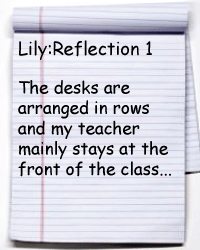 The Learning Milieu: Creating a Positive Classroom Environment
The Learning Milieu: Creating a Positive Classroom Environment
In both cases the student teachers are wondering how they can arrange their classrooms so that students are able to interact and be monitored for participation and behaviour. In this way, language classrooms may differ from other classrooms as getting students to interact is necessary for success. In this section we will discuss some different ways to create a positive learning milieu including seating plans, classroom set-up and creating a positive emotional environment. |
|
How can I create a supportive learning environment?
 |
Watch the video to see how these language teachers have set up their learning milieus. What are some of the things you notice that these teachers have incorporated to promote a positive learning environment? |
|
Creating a positive learning environment can make an immense difference for students. The classroom decor, arrangement of desks, music, emotional environment (the morale and atmosphere), a sense of security and the strategies the teacher employs contribute to student success.
How can I create a positive emotional environment?
As a teacher, you can set the tone for the emotional environment in the classroom. Make the rules clear in the classroom that ensure an environment of safety and respect for all students. Everyone should have a chance to voice their opinion without fear of humiliation. Let the students know who you are as a person; if they know you as a person, they can start to trust you and feel comfortable around you. Let the students know what you expect of them, and let them know what they can expect from you.
When speaking to the students;
- use humour
-address students by name
-use eye contact
-use positive language
-try to interact outside of the classroom
For more information on Building Student Rapport click here.
How can humour be used in the second language classroom?
Using humour is one of the best ways to create a positive dynamic in the classroom. It shows the students that learning doesn’t have to be work and that the class will be as much fun as they allow it to be. Using humour is also a technique used to lower the affective filter (Krashen) so that the students feel less anxiety. This is an important consideration in language classrooms where many students feel a great deal of stress when using the target language orally.
A great opportunity to use humour in a language classroom is when incorporating culture into the lesson; when teaching students about certain day to day aspects of a foreign culture, don’t be afraid to point out some of the more amusing tendencies. A fine line must be drawn here between pointing out amusing aspects and laughing at the cultures, but simply observing different practices that would seem foreign to the students can be fun. Humour and culture can also be integrated into the class through the use of AV materials. This can keep the students engaged and give them more to look at or listen to rather than merely presenting more information either orally or from the textbook. For more tips on using humour in the classroom, click here.
How can I arrange my classroom for student success?
There are many ways to arrange desks in the classroom to facilitate a positive learning environment. What is important is that desks be arranged in a way that all students feel included in the classroom. Students may seem like they want to be further away from the teacher, but the desks can be arranged so that all students are a part of the activities, whether they realize it or not.
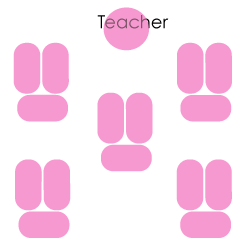 |
Arranging the desks in pods is a method that allows for lots of group discussion. Teachers can let each group function as a team, allowing for some in class competition. Each pod can also have their own supplies, enabling easy access for students. |
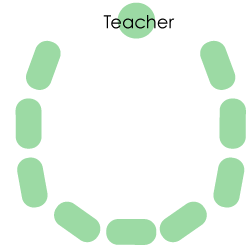 |
Arranging the desks in a U-shape facing the front of the classroom puts the teacher in the centre stage position. It allows for some group work as the desks can easily be grouped in twos or threes, but also allows for more students to sit near the front or further away (without feeling too far from the teacher). |
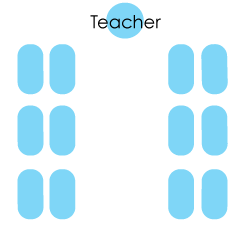 |
Arranging the desks in pairs of rows on each side of the class that face each other facilitates a lot of discussion and group work. |
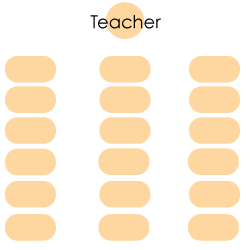 |
Arranging the desks in single/double rows is a more efficient way of having students conduct independent work and avoids classroom management issues. However, this arrangement does not promote as much communication or interaction between students. |
back to top









 Jin and Lily have both noticed the way that their mentor teachers have arranged the classroom. In Jin's case, he is wondering how he can create an environment that facilitates learning while at the same time limits classroom disruptions. In the case of Lily, she has noticed that the teacher has arranged the classroom in rows to do just that. She sees that the seating plan has a lot to do with the classroom management and teaching style of her mentor teacher.
Jin and Lily have both noticed the way that their mentor teachers have arranged the classroom. In Jin's case, he is wondering how he can create an environment that facilitates learning while at the same time limits classroom disruptions. In the case of Lily, she has noticed that the teacher has arranged the classroom in rows to do just that. She sees that the seating plan has a lot to do with the classroom management and teaching style of her mentor teacher. 
